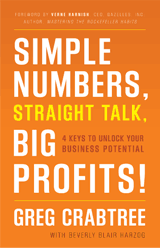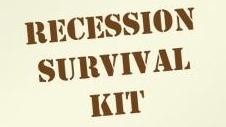What Is Your Salary Cap?
Since the material in Greg Crabtree’s book “Simple Numbers, Straight Talk, Big Profits” has been so enlightening, I want to share more from his book to help us all out in the financial arena. This is not the stuff they teach you in school. It has real world understanding of how to look at your business financials from an entrepreneurial perspective.
As I read the book, I was most recently struck by his comparison between businesses and the NFL. Like the NFL, we as business owners have salary caps. The NFL created a salary cap to max  out what each team can spend on their players in an effort to create a fair shot amongst all the teams. Now, you may have not thought that you have a salary cap. I didn’t either. However, in reality, we cannot pay ourselves more than we generate in revenue, and we also shouldn’t pay out more than what would be a respectable profit margin.
out what each team can spend on their players in an effort to create a fair shot amongst all the teams. Now, you may have not thought that you have a salary cap. I didn’t either. However, in reality, we cannot pay ourselves more than we generate in revenue, and we also shouldn’t pay out more than what would be a respectable profit margin.
Greg points out that every business needs to strive for profit. In general, a company with less than 5% profit margin is on life support. One that is greater than 10% is a good business, and a profit margin above 15% reflects a great business. You need profit to pay your debt and to have cash flow to grow the business.
Let’s look at an example of how this works to determine what your salary cap would look like:
Revenue $ 1,000,000
Salaries $ XXX,XXX
Non-Salary Expenses $ YYY,YYY
Pre-Tax Profit $ 100,000 (10% of revenue, the percentage you want to have to be a good business)
Now you can determine your business’ salary cap. Start by adding up all your non-salary expenses and plug them into Y. Then, subtract your pre-tax profit and the non salary expenses (Y) from your revenue, and the number you have left over is your salary cap (X). This is the number you don’t want to exceed in order to maintain the appropriate profit margin to increase your business. Remember, breaking even is dying, and having less than a 5% profit margin means the business is on life support. If this is not clear, get his book, and it will break it down for you very clearly.
What do you do if your salary number is higher than what it should be to maintain an appropriate profit margin? You go back and look at the productivity of your people and determine who is getting it done and who is not. As we grow, we tend to hire quickly and sometimes hire people into roles that do not meet their strengths. As business owners or CEOs, we need to make sure we have the right people performing in the right roles for optimal productivity.
What is your salary cap, and does it give you the profit margin you desire and one that will grow your business?


 to search and came upon a really good book called “
to search and came upon a really good book called “



